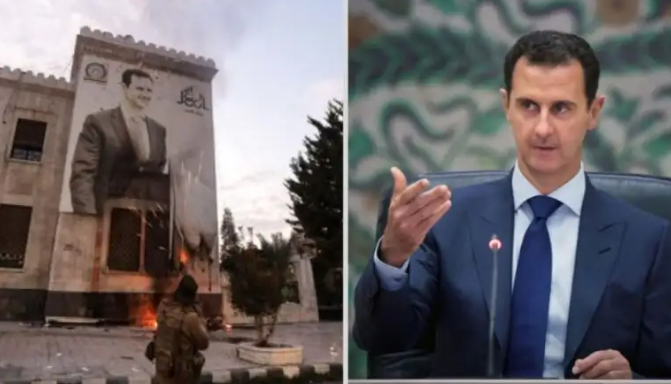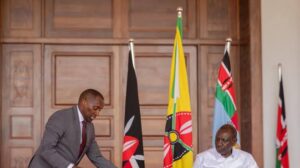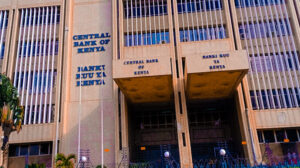Bashar al-Assad’s end brings an end to more than a half-century of family control, as opposition forces reversed the tide in a civil war he had supported.
Assad worked as an ophthalmologist in the United Kingdom before embarking on his political career.
Assad worked as an eye doctor in London before moving to Damascus, and his only formal post in Syria was as head of the Syrian Computer Society.
In London, he met his future wife, Asma Akhras, a former JPMorgan investment banker who grew up in Acton, west London.
She left her career for Assad after traveling to Libya as a guest of then-leader Muammar Gaddafi.
In 1994, Assad’s older brother and presidential heir, Bassel, was killed in an automobile accident in Damascus.
Assad was quickly summoned back home, where he underwent military training and was promoted to colonel to show his qualifications for leadership.
But there was no question he would take control.
To top it off, his ascension was affirmed following a nationwide referendum in which he was the only contender.
Assad began his reign by promising to eliminate corruption and open up the media.
He inherited a decaying country and had no backing from his father’s loyalists.
Despite his kind demeanor, the lanky Assad was seen as a nerd, and he was constantly trying to prove himself, not least to his terrifying mother, whom the president’s wife also strove to impress.
He rapidly released political prisoners and encouraged more open debate.
Salons for intellectuals formed after his father’s death during the “Damascus Spring” to discuss art, culture, and politics.
However, these were extinguished after 1,000 intellectuals signed a public petition in 2001 demanding multiparty democracy and increased liberties.
He gradually eased economic constraints, welcomed international banks, allowed for imports, and empowered the private sector.Syrian cities began to see retail malls, new eateries, and consumer items, as tourism increased.
But abroad, he kept to his father’s approach, which was based on an alliance with Iran and a strategy of demanding the full return of Israel’s seized Golan Heights.
He selected the former, which infuriated his family.
Assad gradually came to believe that the West was weak and that the more he exhibited strength, the more success he would have.
Rafik Hariri, the former prime minister of Lebanon, was assassinated by a bomb while driving in Beirut in 2005.
The Syrian regime was blamed.Syria was compelled to remove its soldiers from Lebanon, and a pro-American government took power instead.
Syrian Civil WarA few years after going against his father’s history, Assad would use his violent tactics as protests erupted against his rule in March 20211, during the Arab Spring.
He had previously denied that the Arab Mutiny would spread to Syria, even sending an email criticizing the Egyptian leader’s refusal to step down two days after his removal.
However, reality set in after demonstrators in the southern city of Daraa were killed by government troops, causing widespread unrest.
According to the UN, a full-scale civil war would break out, resulting in the world’s biggest refugee catastrophe.
The UN says that over 14 million Syrians have been compelled to evacuate their homes in search of safety.
Since then, Assad’s regime has faced widespread claims of atrocities, including the use of chemical weapons such as sarin, chlorine, and mustard gas.
In 2013, a chemical assault on rebel-held eastern Ghouta near Damascus killed dozens of people.
There have also been several reports of rape, beheading, and torture.
Assad was mostly propped up by Russia, which intervened in 2015 to carry out decisive airstrikes, and Iran, both of which provided military support to Syria.
In 2020, Moscow supported a government offensive that resulted in a cease-fire with Turkey and a freeze on most front lines.
Assad controlled the majority of territory and all major cities and appeared to be deeply entrenched, but rebels controlled the northwest and a Turkish-backed army remained on the border.
Meanwhile, Kurdish-led forces held control of the northeast.
After government forces attacked the northwest rebel-held area of Idlib in 2020, killing civilians, Assad appeared to cement his iron fist rule.
Few expected his presidency to expire soon, but just as Assad’s fortunes were determined by Moscow and Tehran, so was his fate by their geopolitical ambitions.
Syria’s defenses were exposed when Russia invaded Ukraine for over three years and Iran was rocked by Israeli attacks on its proxy Hezbollah in Lebanon.
Rebel troops started an offensive on the northern city of Aleppo, which the government had held since 2016, and within days had swept throughout the country.





















Add Comment